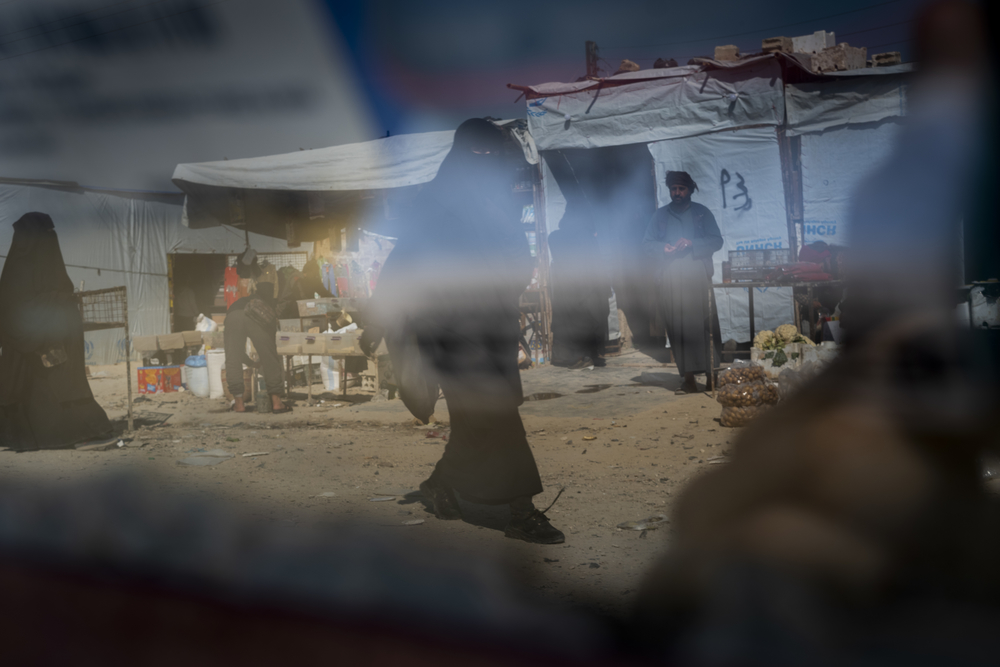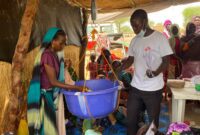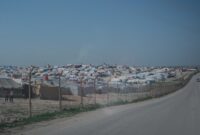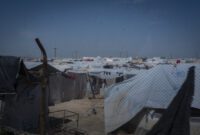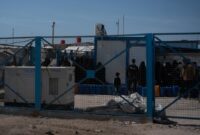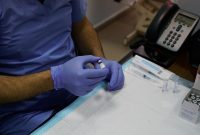No Place For a Child: A Canadian Doctor’s First-Hand Account of Al-Hol Camp, Syria
Dr. Reza Eshaghian shares experience working as a Medical Team Leader in Al Hol
Al Hol camp was not the first camp of displaced people I have worked in with Doctors Without Borders/ Médecins Sans Frontières (MSF), but it certainly was the most disturbing. The suffering in this camp is not seen in the traditional health indicators we usually measure. Here in Al Hol, the suffering is both deeply psychological and physical, at times imposed on people living in the camp intentionally.
I worked with MSF as the medical team leader in Al Hol from November 2020 to February 2021. I have just arrived home in Vancouver thirteen days ago and finishing up my quarantine. During my quarantine, I have reflected what I witnessed in Al Hol and I would like to share it with you.
When I first arrived at the camp, it was clear that this is a locked camp made up mostly of children. There are reportedly 62,000 residents and over 40,000 of them are children.
Humanitarian aid workers are searched and patted down by security forces when entering and exiting the camp. It would often take over an hour just to get in or out. The Annex is a separated part of the camp where third country nationals who are not Syrian or Iraqi are held. The restrictions to services and movement are far stricter in the Annex than the main camp. Early in my time there, before the local authorities completed the fence around the Annex, children from within would watch us – a small ditch separated the outside from the Annex. Children should be playing and climbing around, but these children watched us and knew not to cross the ditch. I wonder what experiences led to their strict obedience of the meaning of the ditch.
MSF provides water, sanitation services and medical care to the camp. Our water and sanitation activities include infrastructure surveillance, water chlorination, water monitoring, water delivery, and latrine and water tank cleaning. Our medical activities include inpatient and outpatient malnutrition treatment, chronic disease home care, wound care, health education, a diabetes clinic and comprehensive primary healthcare is the Annex. At times of need, when other health actors are not present, we treat patients with medical emergencies in our inpatient nutrition center.
We collaborate with other health related NGOs who provided other forms of acute medical care, through a referral system in the camp. The challenge is referring to a hospital in Hassakeh, the nearest city, which is an hour away, for specialized or higher level care not available in the camp. Referrals to Hassakeh are run by another NGO and are only permitted if they are critical emergencies, have a military guard in the vehicle with them and another family member willing to stay in a detention room in the camp as a guarantor. During my time in Al Hol, no patients were allowed to be accompanied by a family member, not even children, no matter the age.
One morning at work, I saw smoke billowing not too far from our health facility in the camp. I asked a colleague about the smoke.
“It’s a fire.” He looked at his phone to get some more information. “There are three children in the tent…it was a major challenge to get them out.”
I looked back at the smoke in shock. The deadly mix of flammable tents and fuel heaters results in children being burned to death far too common.
The camp is an insecure and unsafe place to live. Since the beginning of 2021, there have been around 50 people intentionally killed in the camp. While I was working in the camp, I was struck by the feeling that the psychological stress on people of trying to survive day by day, fearing for their lives and the lives of their children, which is only compounded by the hopelessness that surrounds the uncertainty of their future.
Health care access is very restricted by the local authorities. The only access to health in the Annex is between 9 am and 2 pm. There are a few mobile clinics and our established clinic that is just outside the Annex. Women and children have to access the MSF clinic by going through an armed checkpoint. Often, we would see these women be verbally and physically assaulted on their way to the clinic, creating a major barrier to accessing health. Patients who needed to be referred to higher level care were often delayed or failed due to a cumbersome and limited referral system.
MSF was permitted by local authorities to enter the Annex to do water and sanitation activities. It was a shock to see the Annex with my own eyes. It is reported that around nine thousand people in the Annex, you can immediately see that two-thirds are children. Children everywhere, bored, with nowhere for them to play or be stimulated. Many children were seen climbing onto water trucks while they are driving by. Large areas of standing water, with women struggling to push carts through the mud after collecting items from the market. Some tents were sinking into the mud – it’s clear that water gets in when it rains. Piles of garbage everywhere.
No place for a child to have to witness, never mind to be raised.
